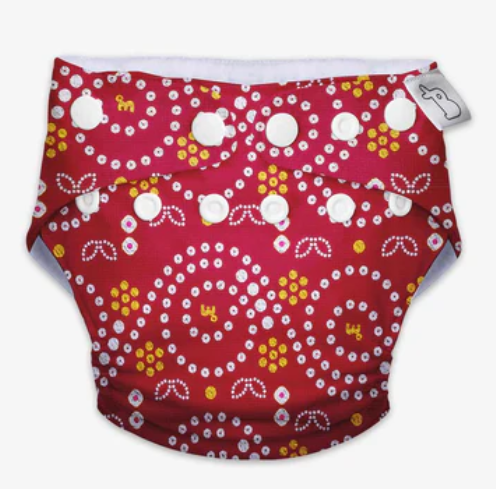Cloth Diapers: Caring for and Maintaining Your Stash

Welcome to the world of cloth diapering, an eco-friendly and cost-effective alternative to disposable diapers. As a parent, choosing cloth diapers can be a fantastic decision for your baby and the environment. Proper care and maintenance are crucial to ensure they remain in top-notch condition and last through multiple children. This blog introduces tips and tricks for caring for and maintaining your cloth diaper stash.
1. Prepping Your Cloth Diapers
Before your little one arrives, preparing your reusable cloth diapers properly is essential. Most cloth diapers, especially those made of natural fibers like cotton or bamboo, require prepping to achieve maximum absorbency. Here’s how to do it:
- Wash new cloth diapers at least thrice before using them to remove any residues from manufacturing and enhance absorbency.
- If you have pocket diapers or diaper covers with inserts, you may need to prep the inserts separately. Check the manufacturer’s recommendations for specific instructions.
- Avoid fabric softeners or detergents containing additives or fragrances, as they can hinder absorbency.
2. Regular Washing Routine
Establishing a consistent washing routine is crucial to maintain the integrity of your baby cloth diapers and keep them smelling fresh. Here are some tips for washing your cloth diapers:
- Start by rinsing off solid waste from the diapers into the toilet. If your baby is exclusively breastfed, there’s no need to rinse off the waste as it’s water-soluble.
- Store dirty diapers in a dry pail or wet bag to prevent odors and mildew growth.
- Wash your cloth diapers every two to three days to avoid staining and deterioration. Waiting too long between washes may cause bacteria to increase, leading to foul smells and potential hygiene issues.
- Before the main wash, use a prewash or rinse cycle with no detergent to remove excess urine and feces.
- For the main wash, use a cloth diaper-safe detergent, preferably without additives or enzymes that could cause residue buildup.
- Choose a water temperature suitable for your diaper materials (typically warm or hot) to ensure proper sanitation.
- Avoid using bleach regularly, as it can break down the fibers and shorten the lifespan of your diapers. Only use bleach occasionally and when necessary to remove stubborn stains or odors.
3. Drying Methods
Proper drying is essential to avoid damaging your newborns cloth diapers and to ensure they remain effective in future uses. Consider the following drying methods:
- Line drying under direct sunlight is ideal for naturally removing stains and sanitizing diapers. The sun’s ultraviolet rays have antibacterial properties that help keep your diapers fresh and odor-free.
- If line drying is not an option, use a dryer in a low or medium-heat setting. High heat can damage elastic and waterproof layers.
- Avoid hanging diaper covers or pockets with inserts by the elastic, as this can cause premature wear and tear.
4. Dealing with Stains
Stains are a common concern with cloth diapers, but fear not; there are ways to handle them effectively:
- Sunning: As mentioned earlier, direct sunlight can naturally bleach stains and eliminate odors. Lay your stained diapers outside on a sunny day, and watch the magic happen.
- Lemon Juice: Another natural stain remover is lemon juice. Dilute lemon juice with water and apply it to the stains before sunning the diapers.
- Diaper Liners: Consider using disposable or reusable liners to catch solid waste, reducing the likelihood of stains on your diapers.
5. Troubleshooting Common Issues
- Leaking Diapers: Leaks can occur if the diaper is not fitted correctly or the absorbency needs to be increased. Double-check the fit and add additional inserts for extra absorbency if needed.
- Smelly Diapers: Persistent odors might indicate detergent buildup. Strip your diapers by washing them several times without detergent, or use a specialized cloth diaper stripping product.
- Elastic Wear: Over time, elastic can lose its stretchiness. If this happens, consider replacing the elastic or retiring the diaper.
Conclusion:
Caring for and maintaining your cloth diaper stash ensures their longevity and efficiency. With proper washing, drying, and stain removal techniques, you can keep your cloth diapers in excellent condition, saving money and contributing to a healthier planet for your little one. If you’re looking for top-quality cloth diapers, consider exploring the range offered by SuperBottoms, a renowned brand known for its eco-friendly and sustainable diapering solutions. Embrace the cloth diapering journey with SuperBottoms, and you’ll reap this eco-friendly, cost-effective choice’s benefits for years. Happy diapering!



